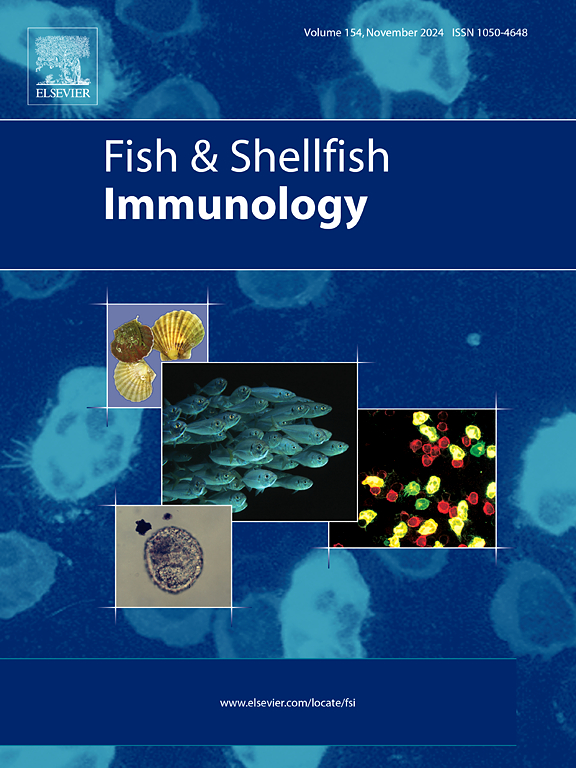Rahnella aquatilis VgrG-mediated PANoptosis in macrophages of Carassius auratus by dual RNA-seq analysis
IF 4.1
2区 农林科学
Q1 FISHERIES
引用次数: 0
Abstract
Rahnella aquatilis is an emerging opportunistic pathogen that usually causes septicemia in fish and poses a potential threat to human health. VgrG gene is an important virulence factor of type VI secretion system in R. aquatilis, but its regulatory mechanism underlying PANoptosis is still unknown. Here, VgrG deletion mutant strain of R. aquatilis (ΔVgrG-RA) and recombinant plasmid pET32a-VgrG were respectively constructed, and immunohistochemistry for VgrG as well as PANoptosis features were evaluated. Moreover, the interaction transcriptome of ΔVgrG-mediated pathogen and host was determined by dual RNA-seq using an in vitro model of the primary macrophage cells from crucian carp Carassius auratus, and a total of 889 and 3765 differentially expressed genes (DEGs) were identified in pathogen-host interaction genes, respectively. Notably, GO and KEGG enrichment analysis were significantly involved in the PANoptosis pathways in ΔVgrG mutant-infected macrophages. The regulatory relationship of potential PANoptosis-related genes (PRGs) were analysed comprehensively, and their binding interaction of several hub proteins (eg., YcgR, Bcl2a, Calr3a, IL-1β) were determined by molecular docking analysis. To our best knowledge, this is first report of R. aquatilis VgrG-mediated interactions between pathogen and host macrophage cells, which will provide a new reference for understanding of molecular mechanism underlying PANoptosis in fish.
求助全文
约1分钟内获得全文
求助全文
来源期刊

Fish & shellfish immunology
农林科学-海洋与淡水生物学
CiteScore
7.50
自引率
19.10%
发文量
750
审稿时长
68 days
期刊介绍:
Fish and Shellfish Immunology rapidly publishes high-quality, peer-refereed contributions in the expanding fields of fish and shellfish immunology. It presents studies on the basic mechanisms of both the specific and non-specific defense systems, the cells, tissues, and humoral factors involved, their dependence on environmental and intrinsic factors, response to pathogens, response to vaccination, and applied studies on the development of specific vaccines for use in the aquaculture industry.
 求助内容:
求助内容: 应助结果提醒方式:
应助结果提醒方式:


